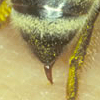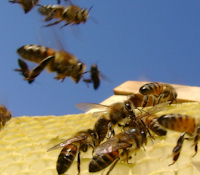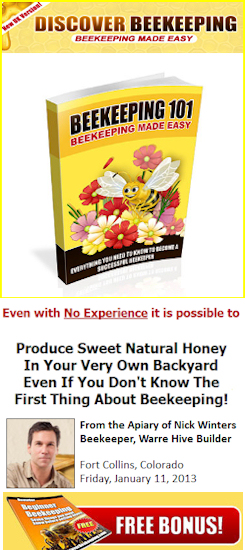Do Honey Bees Sting?

Yes, Honey Bees do sting! The sting is found in the abdomen, the larger part of the Bee which also contains the heart, the wax glands and the reproductive organs. There are two glands associated with the sting. One is known as the bifurcated venom gland which produces the venom and the other is the alkaline gland which produces the lubricant for the sting mechanism.
Bees use their sting to defend their colony and when used effectively a well targeted thrust can paralyse or even kill the opposing Bee. Within the context of the bee world the Bee sting is a deadly weapon. It is also given an extra edge because when a Bee stings it releases a pheromone called Isopentylacetate which calls it’s fellow Bees to ‘sting in the same place’ and acts as a call to battle.

The impulse for a Bee to sting can often be triggered if a Bee becomes entangled, for example in hair of clothing and this in turn can cause the victim to wave their hands wildly. This also helps trigger the impulse to sting and double the trouble for the surprised victim.
If you are handling a colony of bees or you are a bee keeper it is always advisable to wear a veil and cover your face as it hurts when you are stung. Also gloves are advisable, especially if new to keeping bees, because when starting out having gloves on gives you more confidence to handle the colony and also keeps your hands clean for when having to do more delicate tasks such as clipping the queen’s wings. It’s easy enough to whip them off and then slip them back on as required.
The Action of the Honeybee Sting
When the honeybee stings it bends its abdomen downward, which is due to the contraction of particular abdominal muscles and plates. This angle of the sting allows the number of things. Firstly it allows this sting to enter nearly perpendicularly into the skin of the target, which is the shortest path through the thinnest part of the skin because there is no angle. It also allows the Bee to use its leg muscles to help thrust in the point for better penetration.
As the sting shaft extends venom is pumped through the central canal. This pumping of the venom is produced by squeezing and rubbing of the two lancets, within the stink shaft. The structure of the steam consists of three hollow pointed structures which are sharp and lots together around a simple. Because of this pumping motion the venom comes into contact with a much more of the victims tissue, rather than one quick shot. It also means that a small amount of the venom leaks due to the action which enables a pheromone alert at the earliest possible moment.

